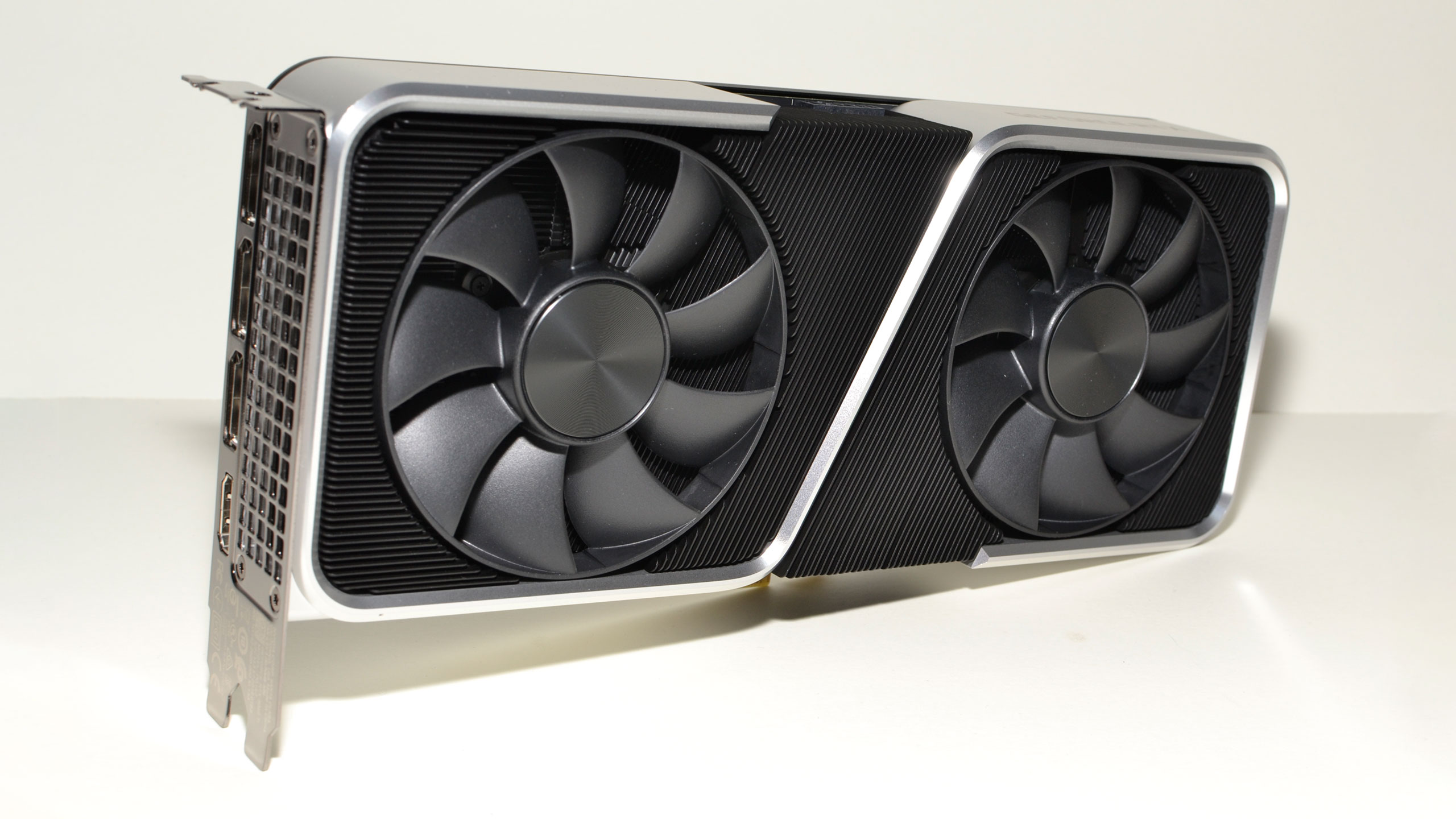Why you can trust Tom's Hardware
The RTX 3060 Ti has a relatively tame power rating of just 200W. Even overclocked with the power limit set at the maximum 110 percent isn't going to be too bad, as that's only around 220W. For these tests, we run Metro Exodus at 1440p ultra, without ray tracing or DLSS. We also use FurMark running at 1600x900 in a window using the stress test mode. We'll look at power, GPU clocks, temperatures, and fan speeds.
We also measured the noise levels of the RTX 3060 Ti from a distance of 15cm. At idle, from that distance, our PC's noise floor is 46.0 dB (or 34 dB from where my head is relative to the case on the floor). After running Metro for 15 minutes, the 3060 Ti FE noise levels were barely above that — 46.9 dB. For reference, that's basically the same result as the 3070, which you'd expect considering the two share the same core design.
Clock speeds, temperatures, fan speeds, and power are all interrelated. Drop the clocks, and you reduce the power and temperature. Raise the fan speed, and you reduce the temperature and maybe even power use, potentially allowing for higher clocks. It's a four-way balancing act, and utilities like EVGA Precision X1 and MSI Afterburner allow you to customize your particular card (within limits).
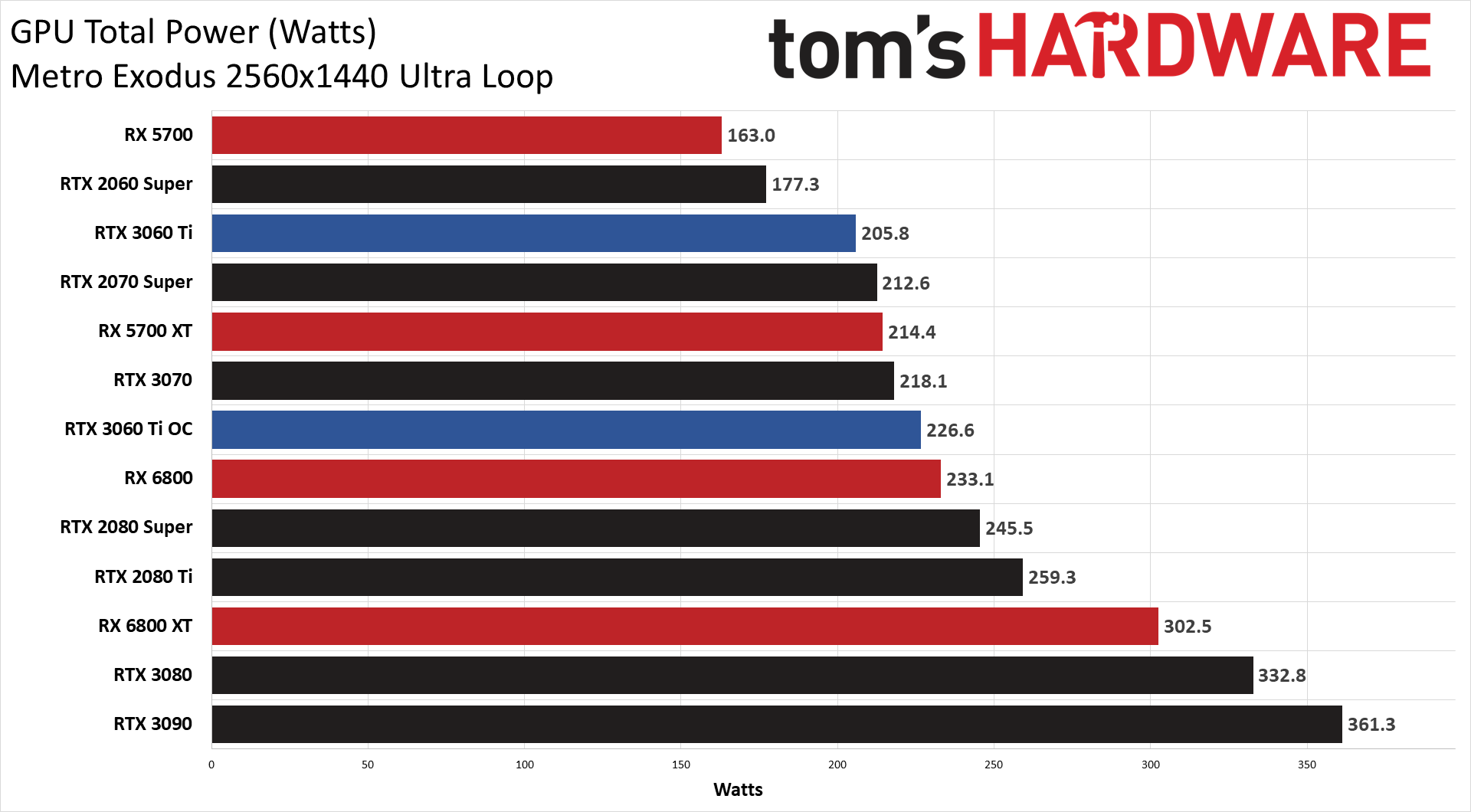
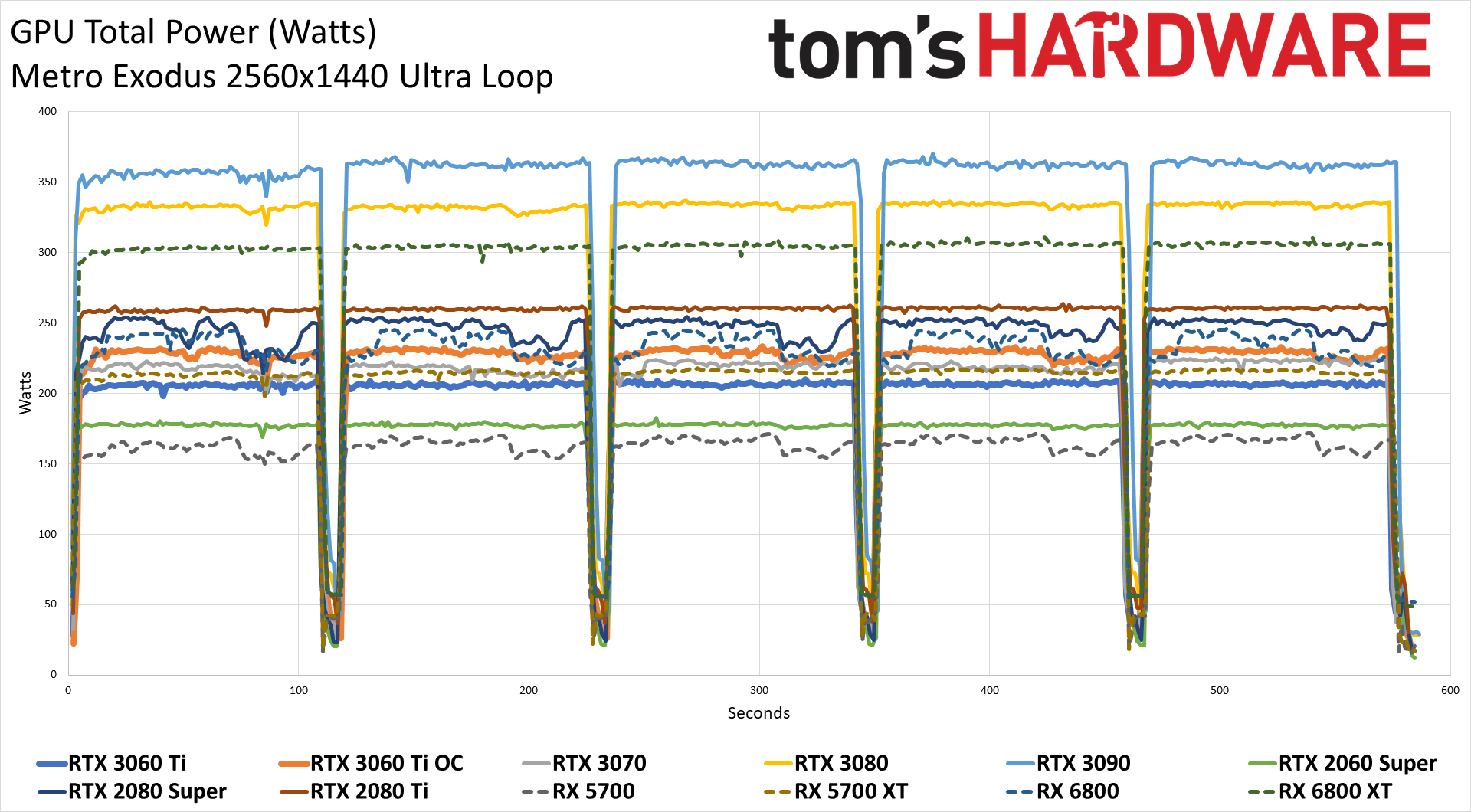
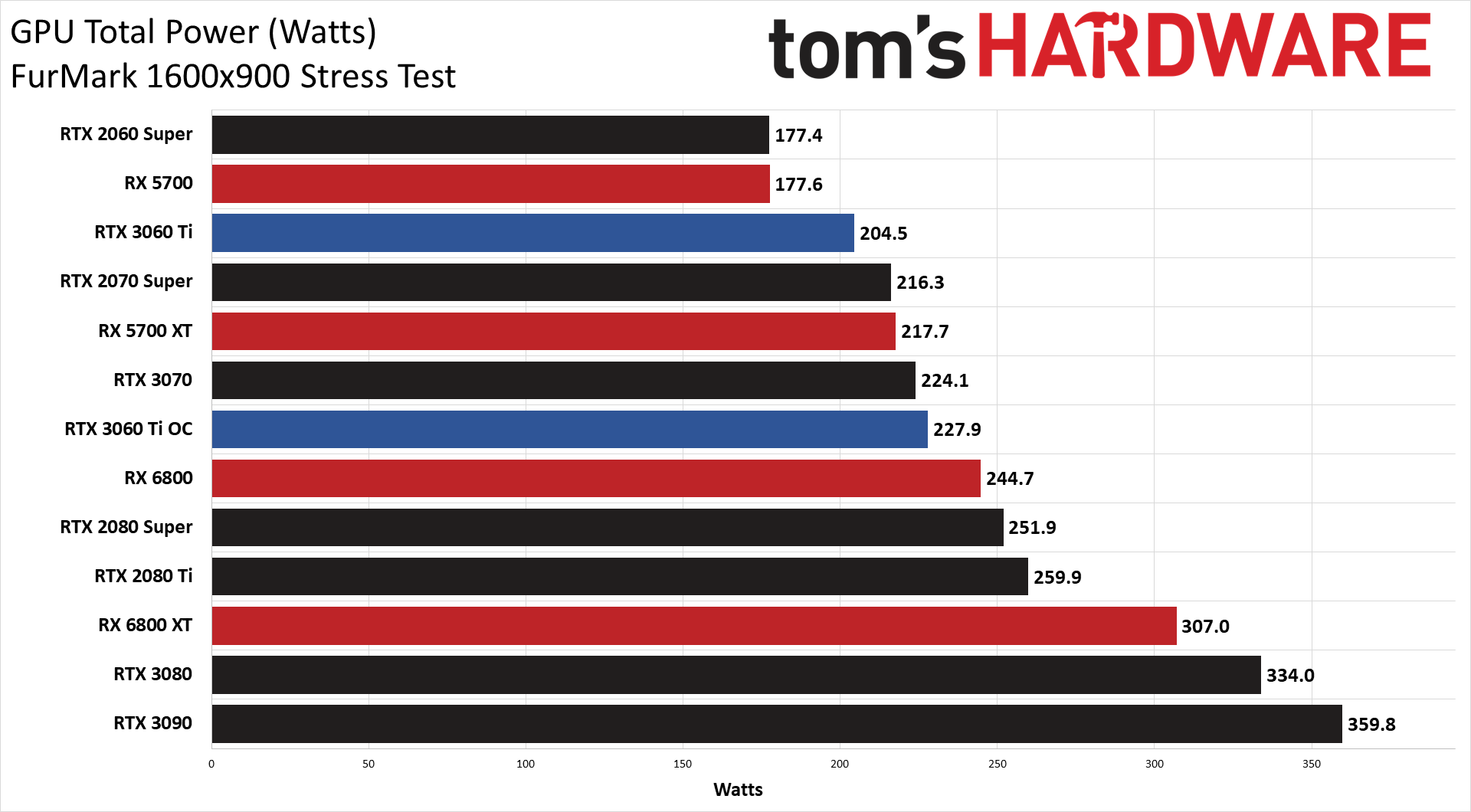
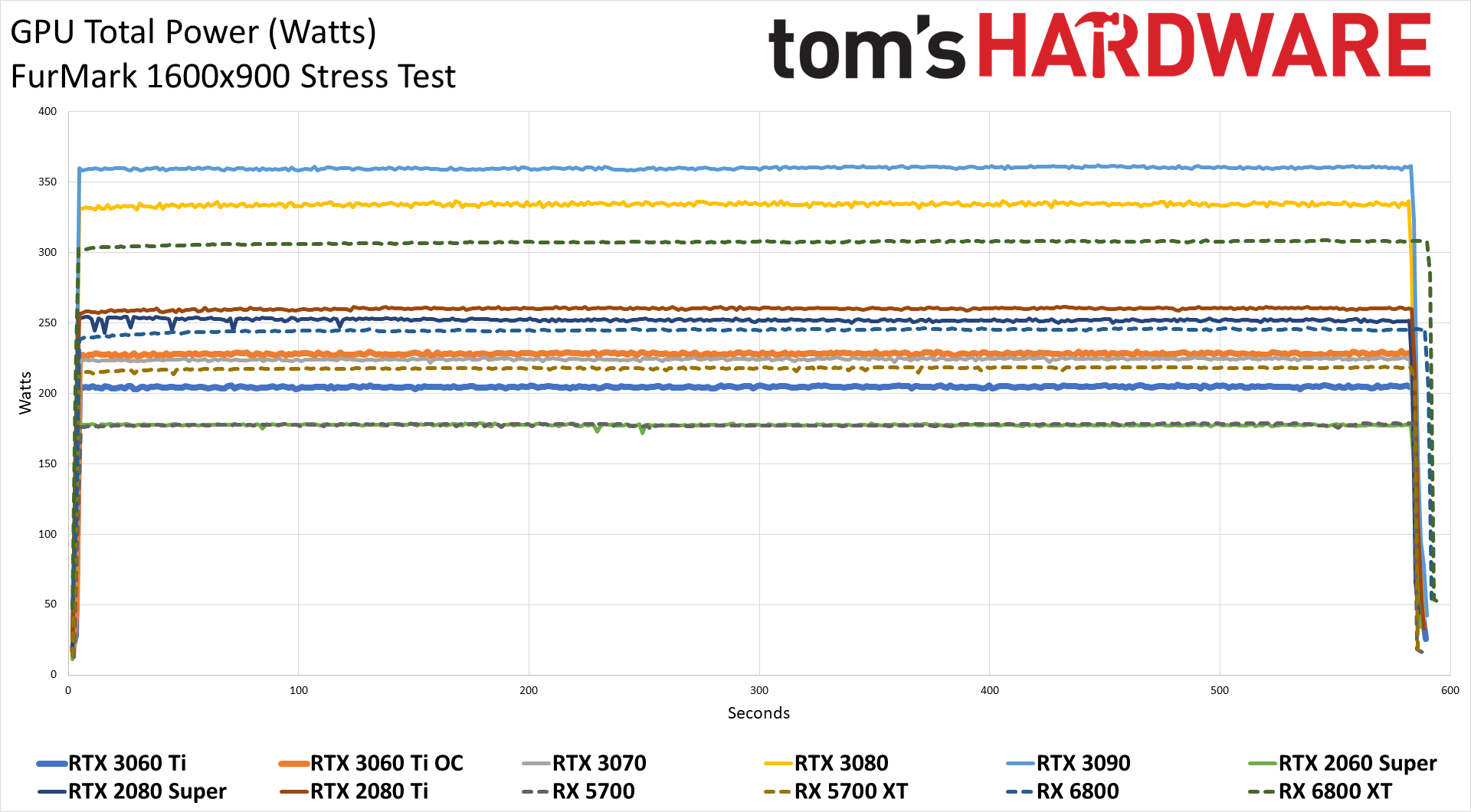
As we've seen with several other Nvidia GPUs, power use ends up being slightly higher than the official TDP. I don't think anyone will cry foul about a card using 205W instead of 200W, but it's interesting that the 3070 so far is the only Ampere GPU that came in below its official TDP (while gaming). Overclocked, the 3060 Ti actually exceeded the 3070 in power use.
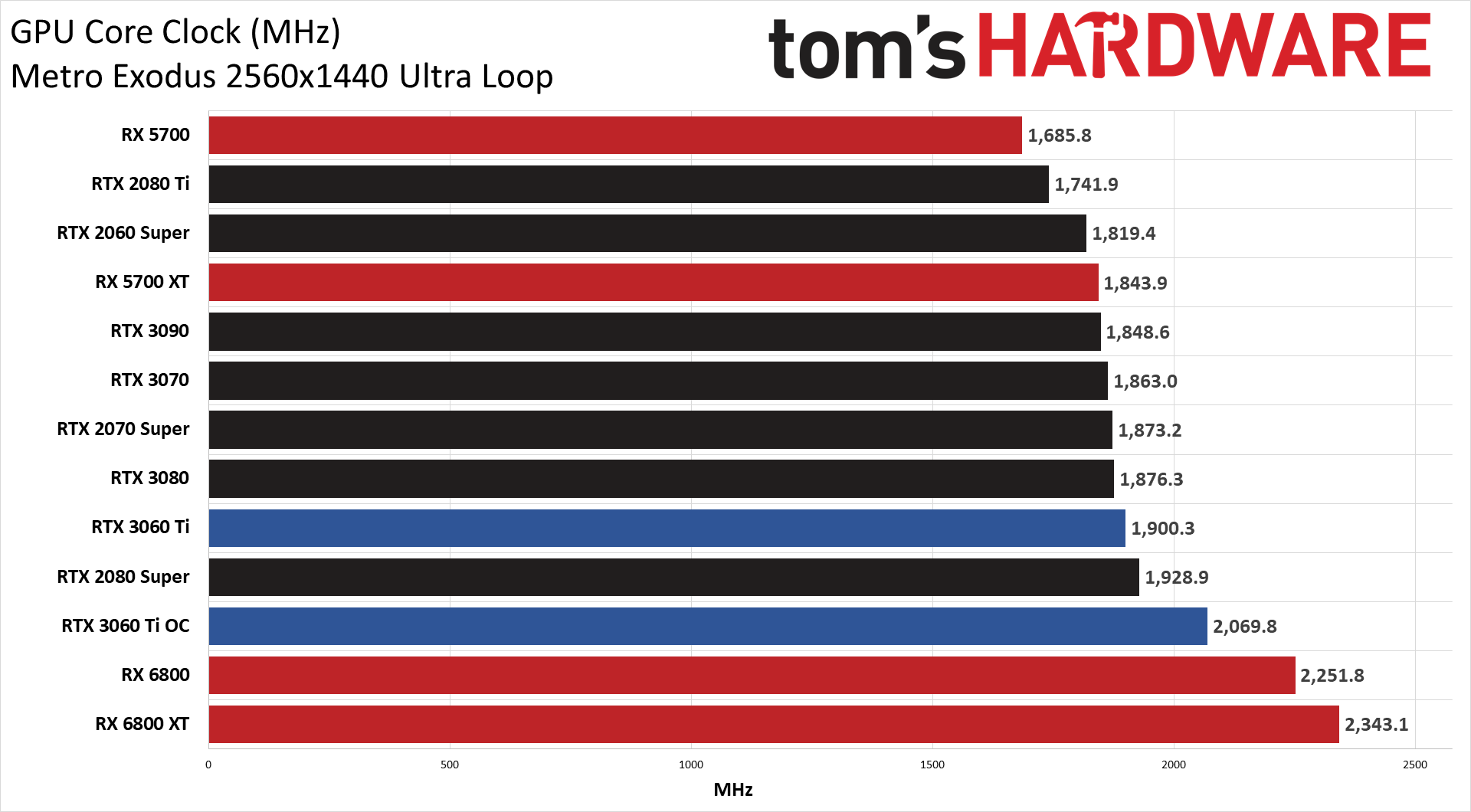
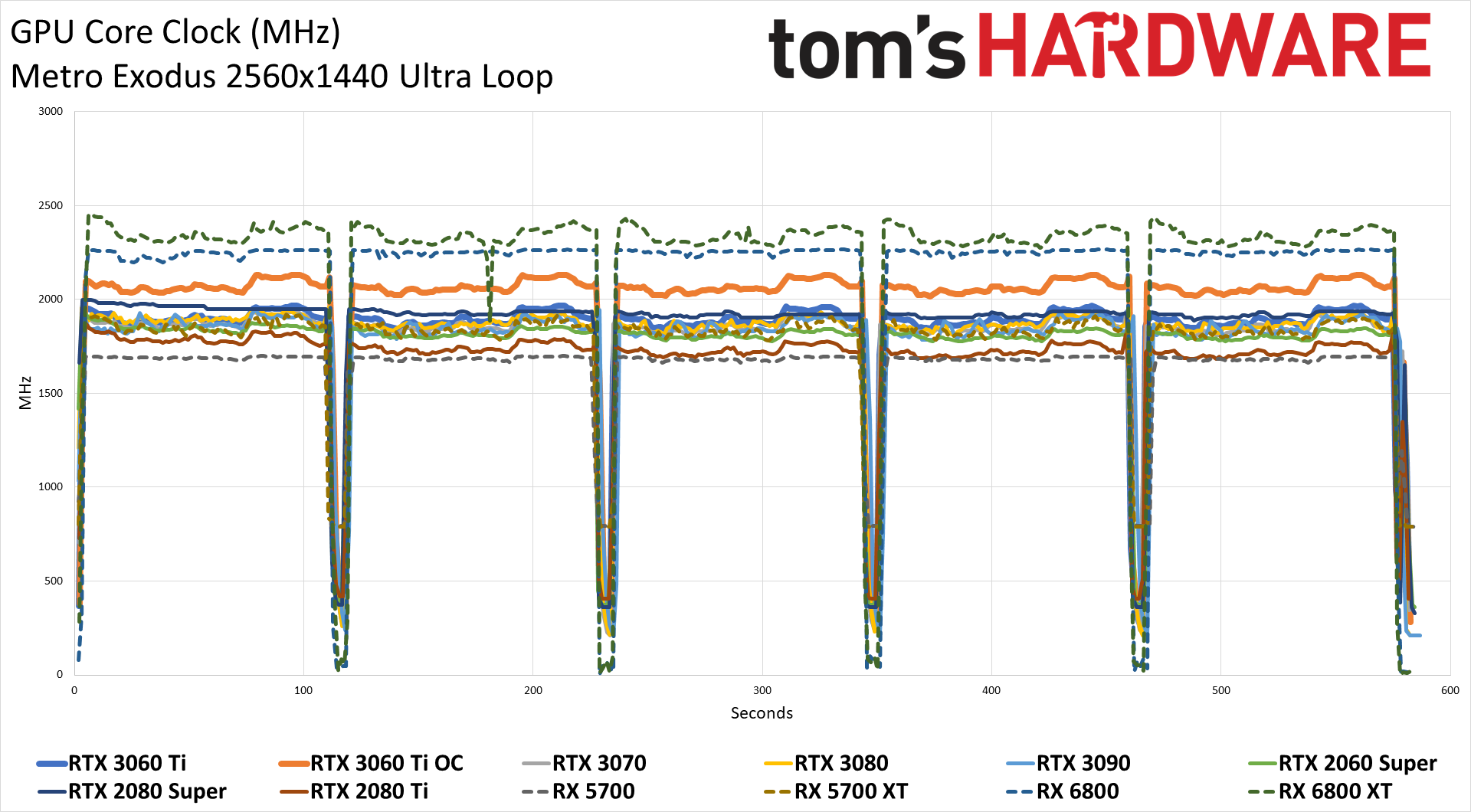
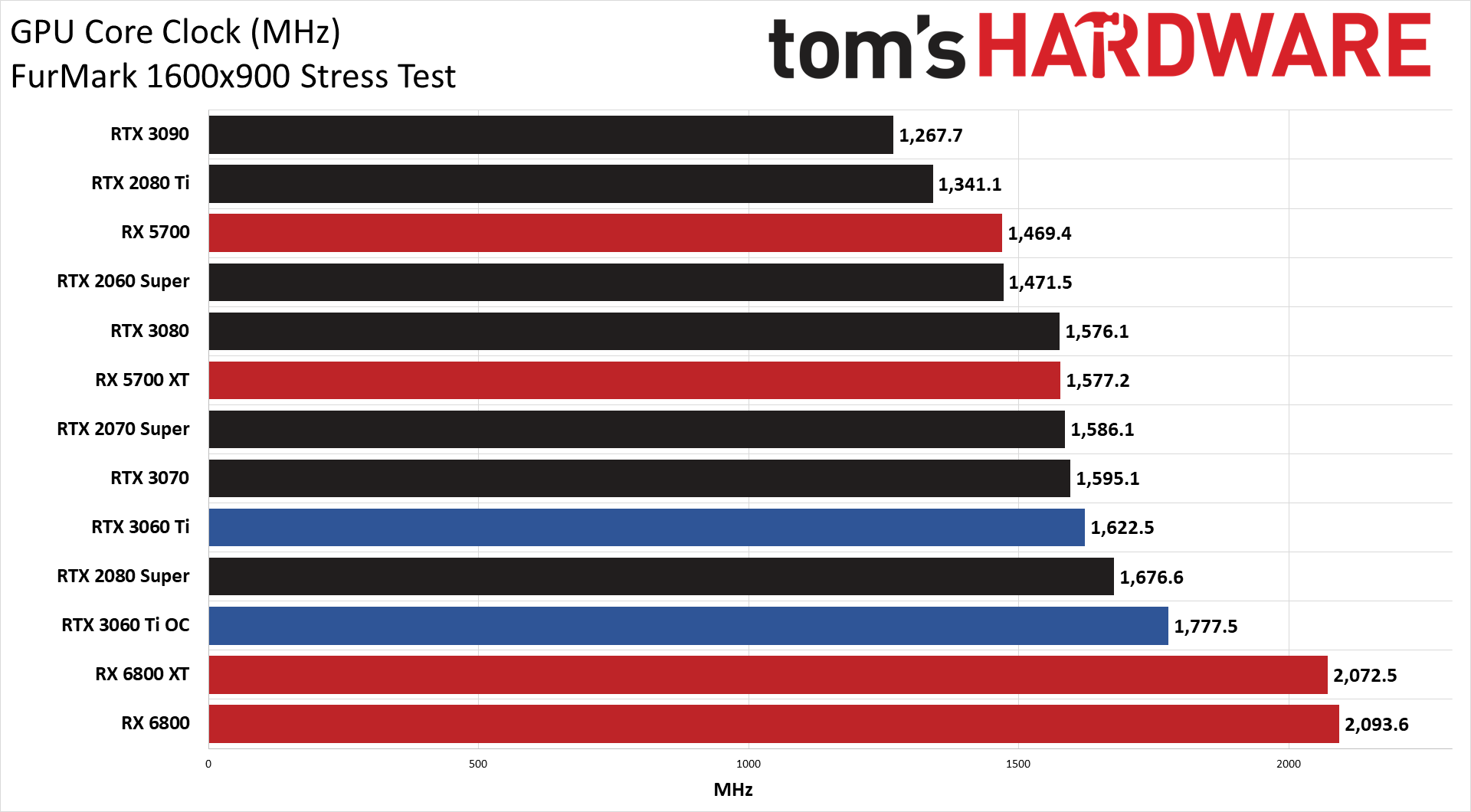
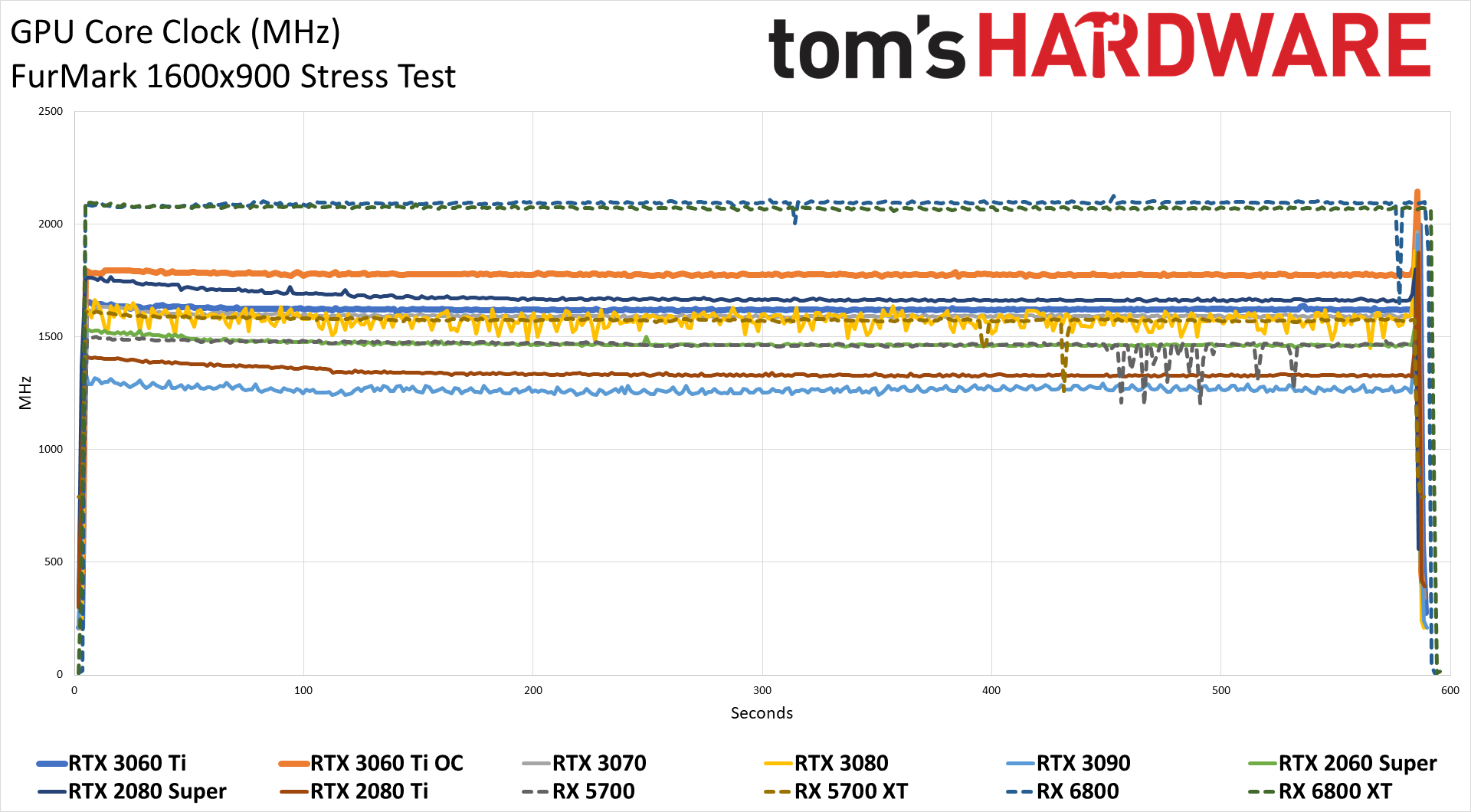
Nvidia tends to be quite conservative with its advertised boost clocks, and the RTX 3060 Ti Founders Edition proves that yet again. The official boost clock is only 1665 MHz, but during our Metro Exodus test, the GPU averaged 1900 MHz. Overclocking pushed that up to 2070 MHz. FurMark does drop the GPU clock just a bit below the rated boost clock (1623 MHz), but it's higher than the base clock of 1410 MHz. Much as you'd expect, our 150 MHz overclock also translates into a 155 MHz average clock speed increase for FurMark.
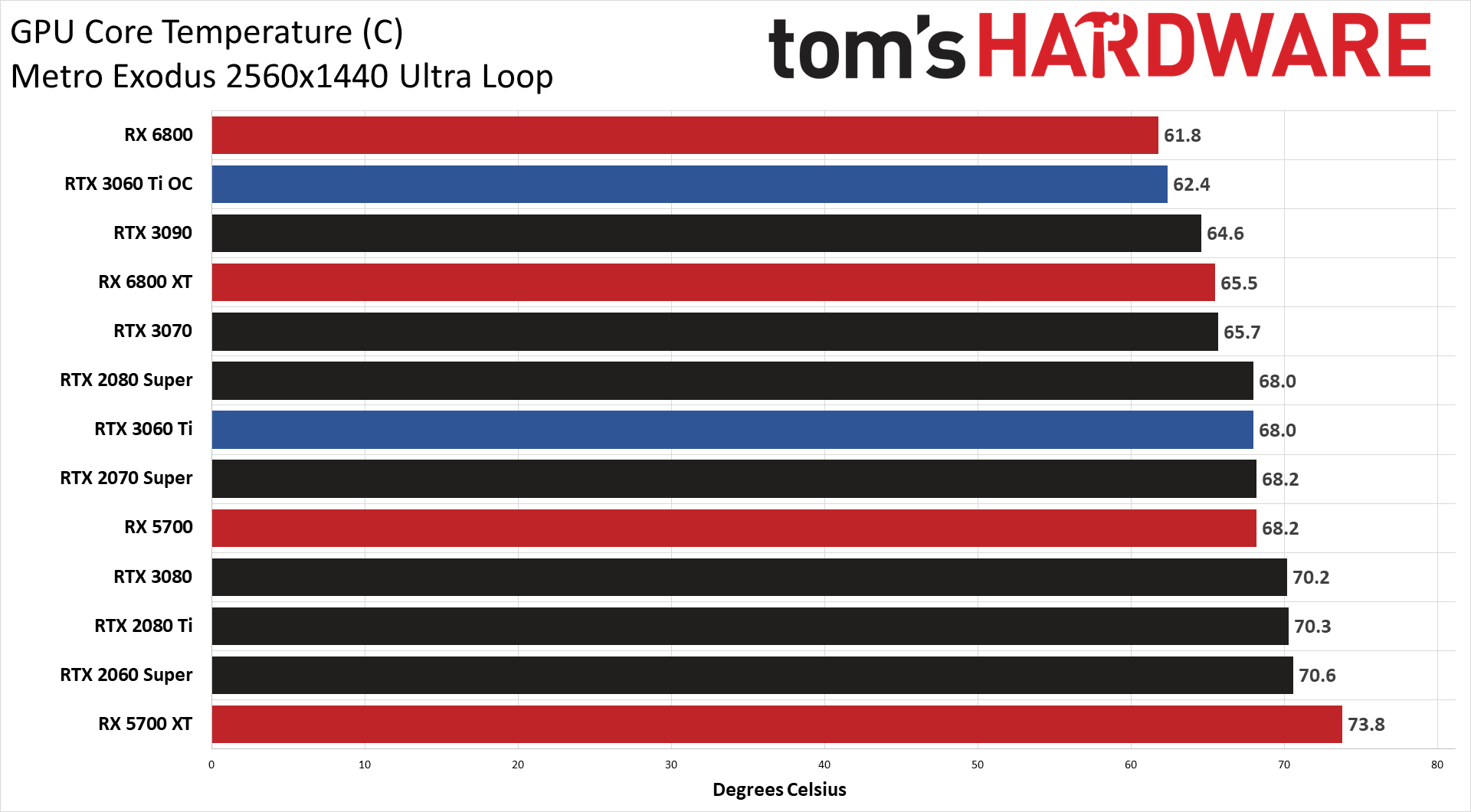
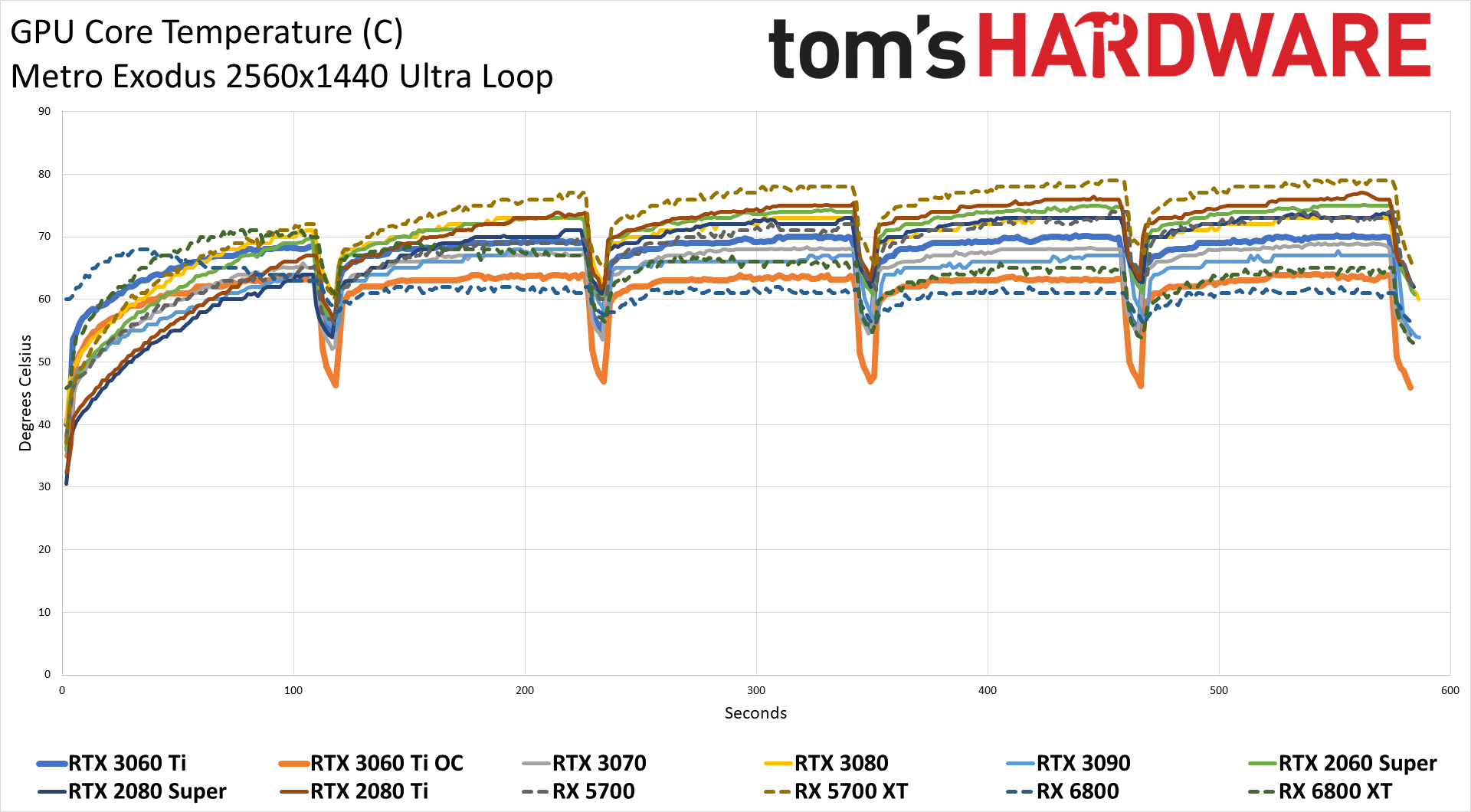
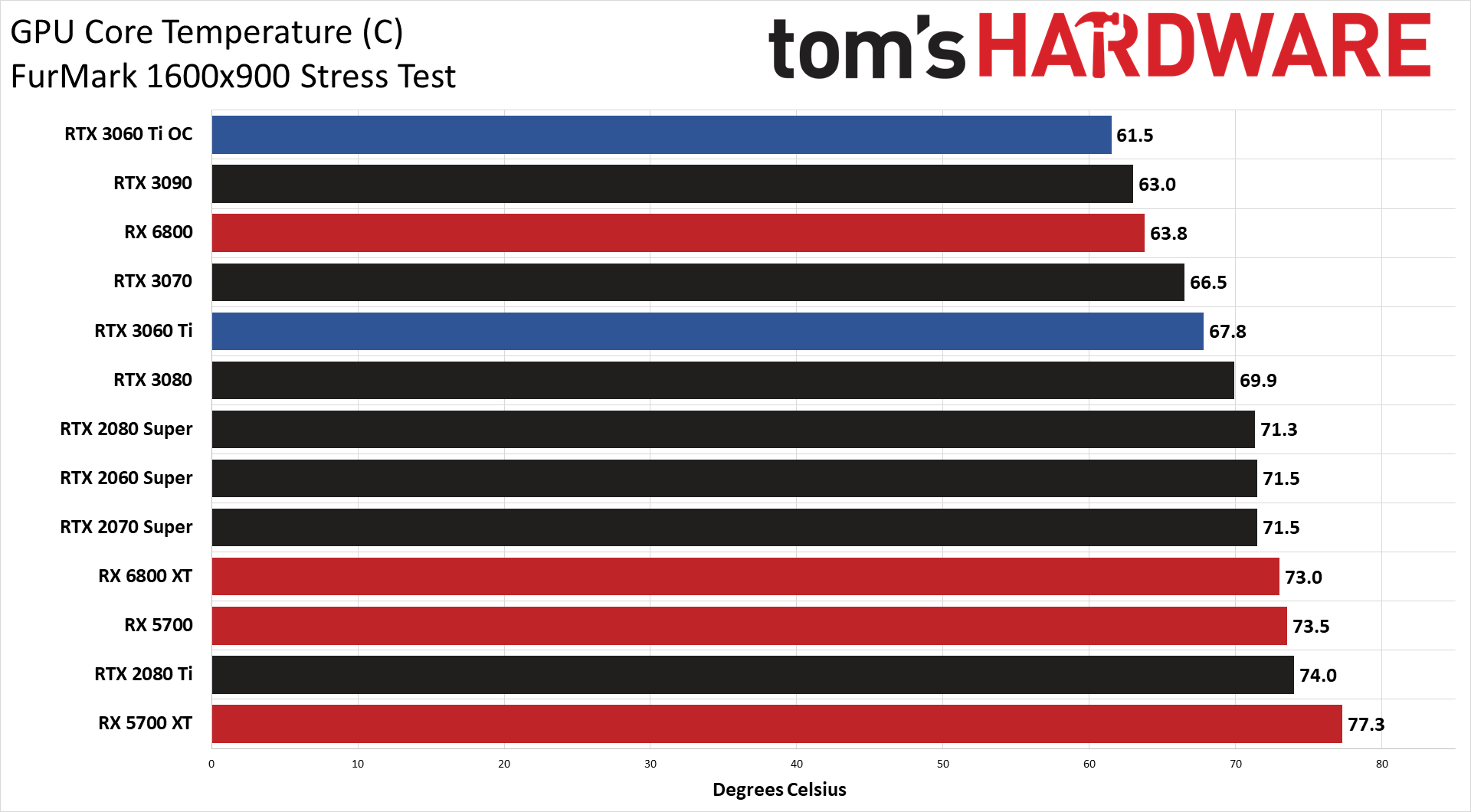
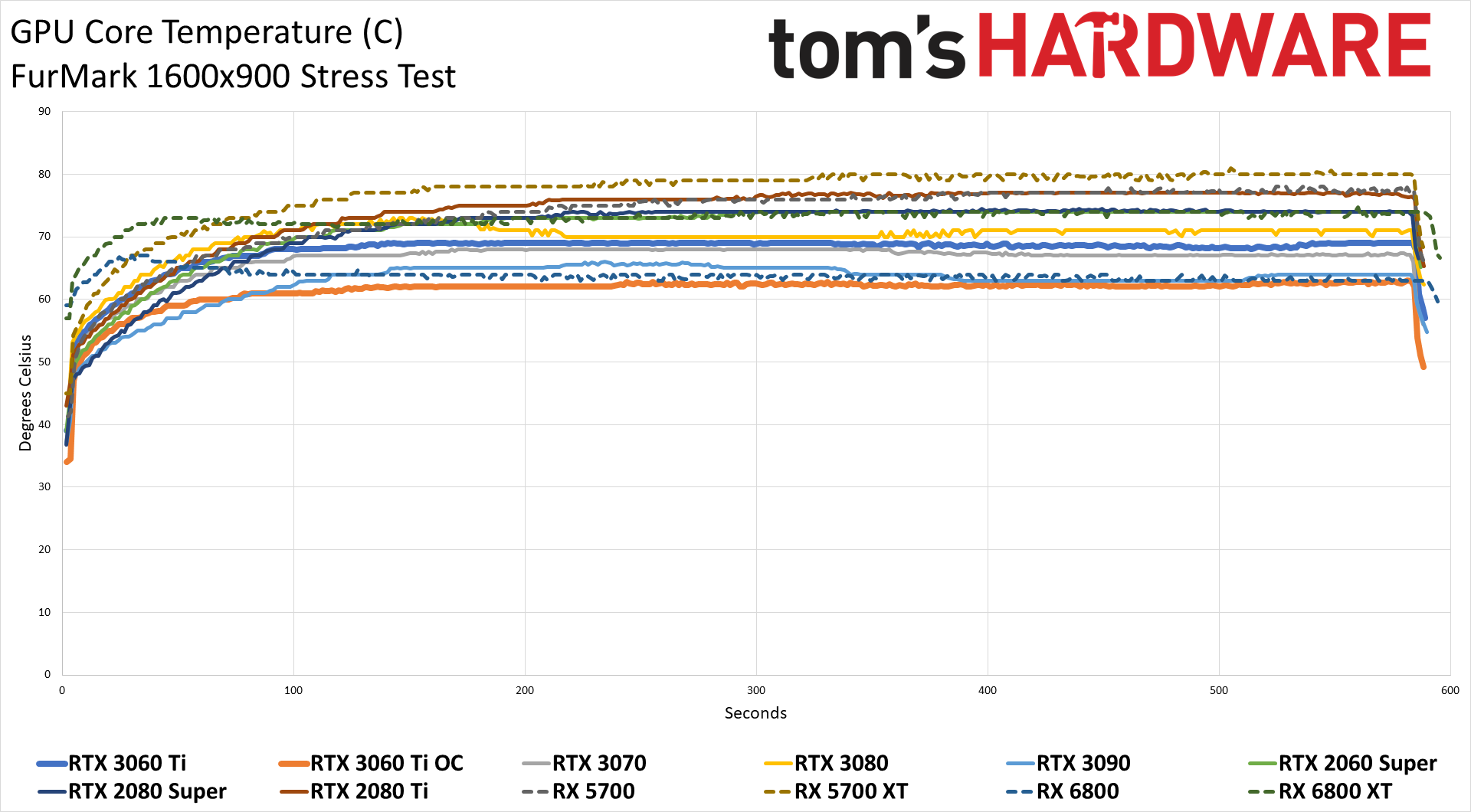
Temperatures for the RTX 3060 Ti FE are good as well. Most GPUs can happily run at 70C, and that's basically where the card ends up at stock. Because of the higher fan speeds we applied during overclocking, that actually drops the temperature (but increases the noise levels). Both Metro and FurMark top out at around 69-70C.
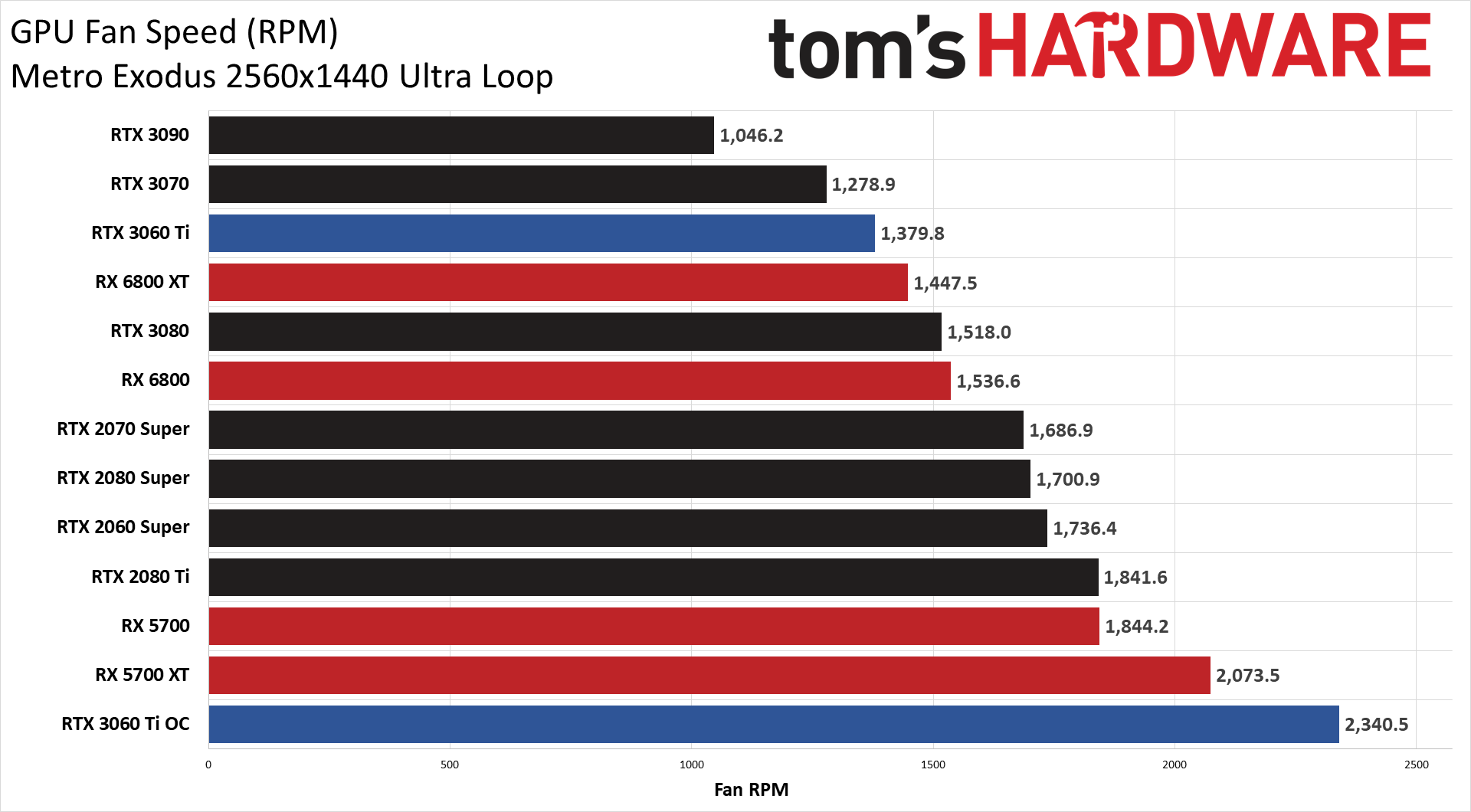
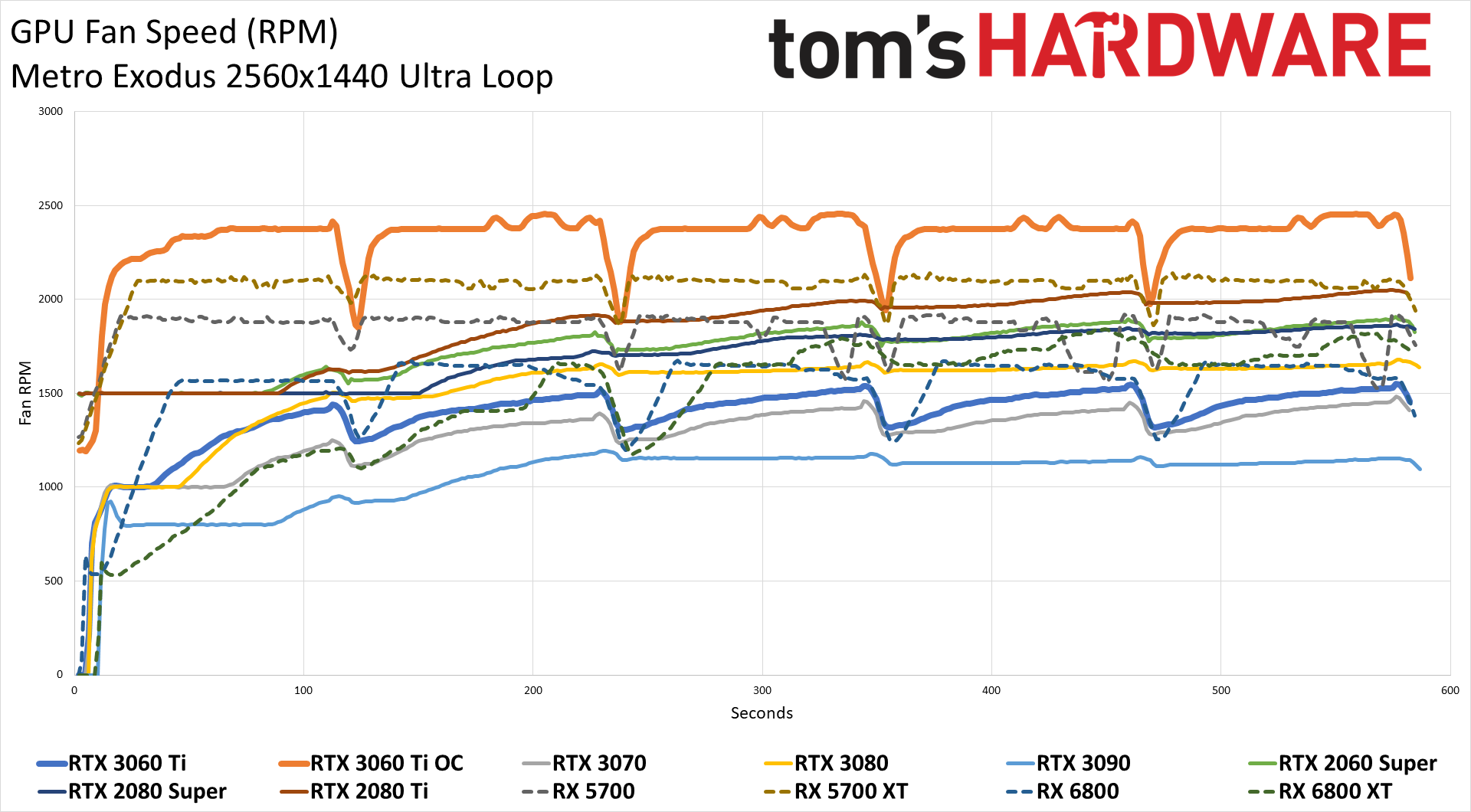
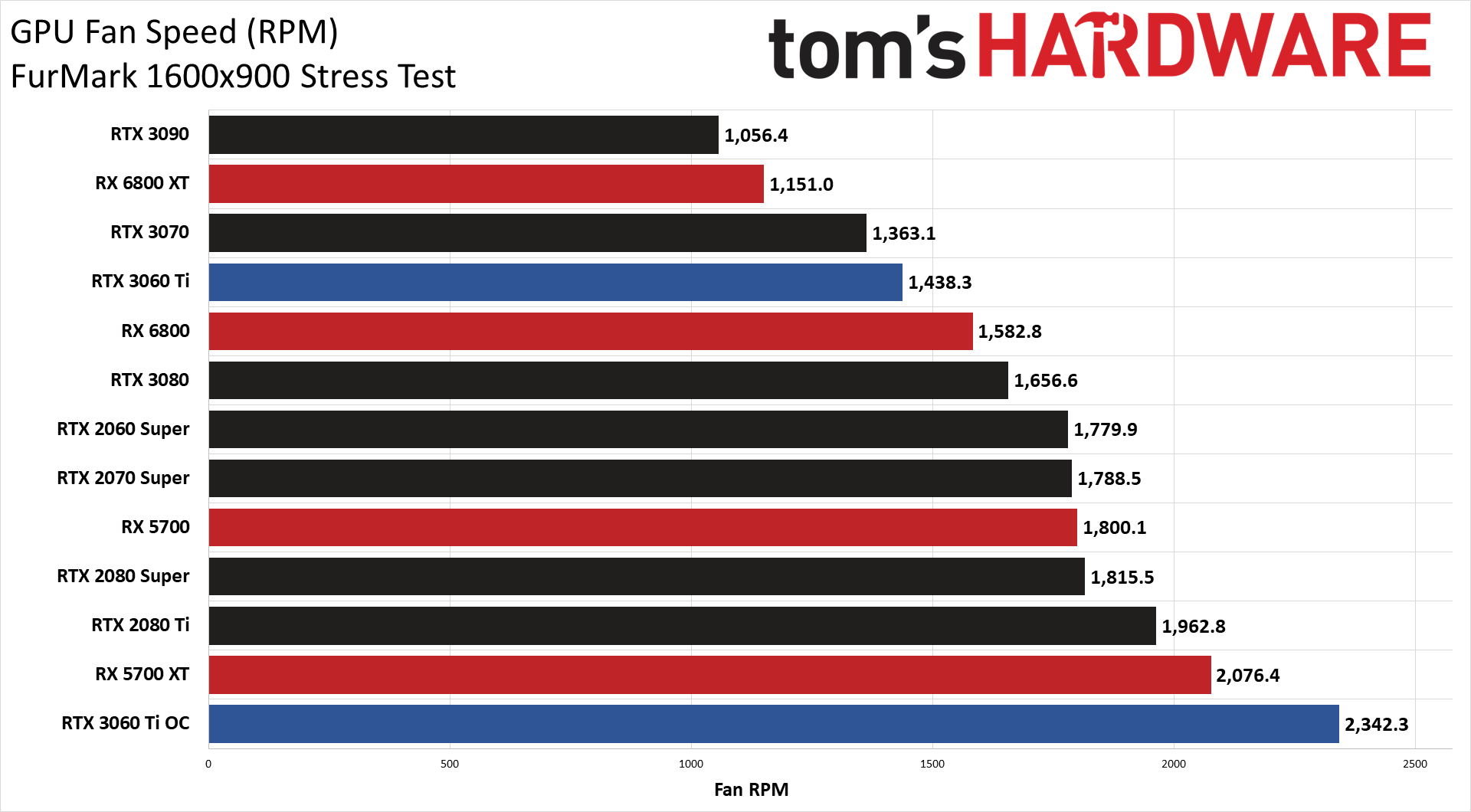
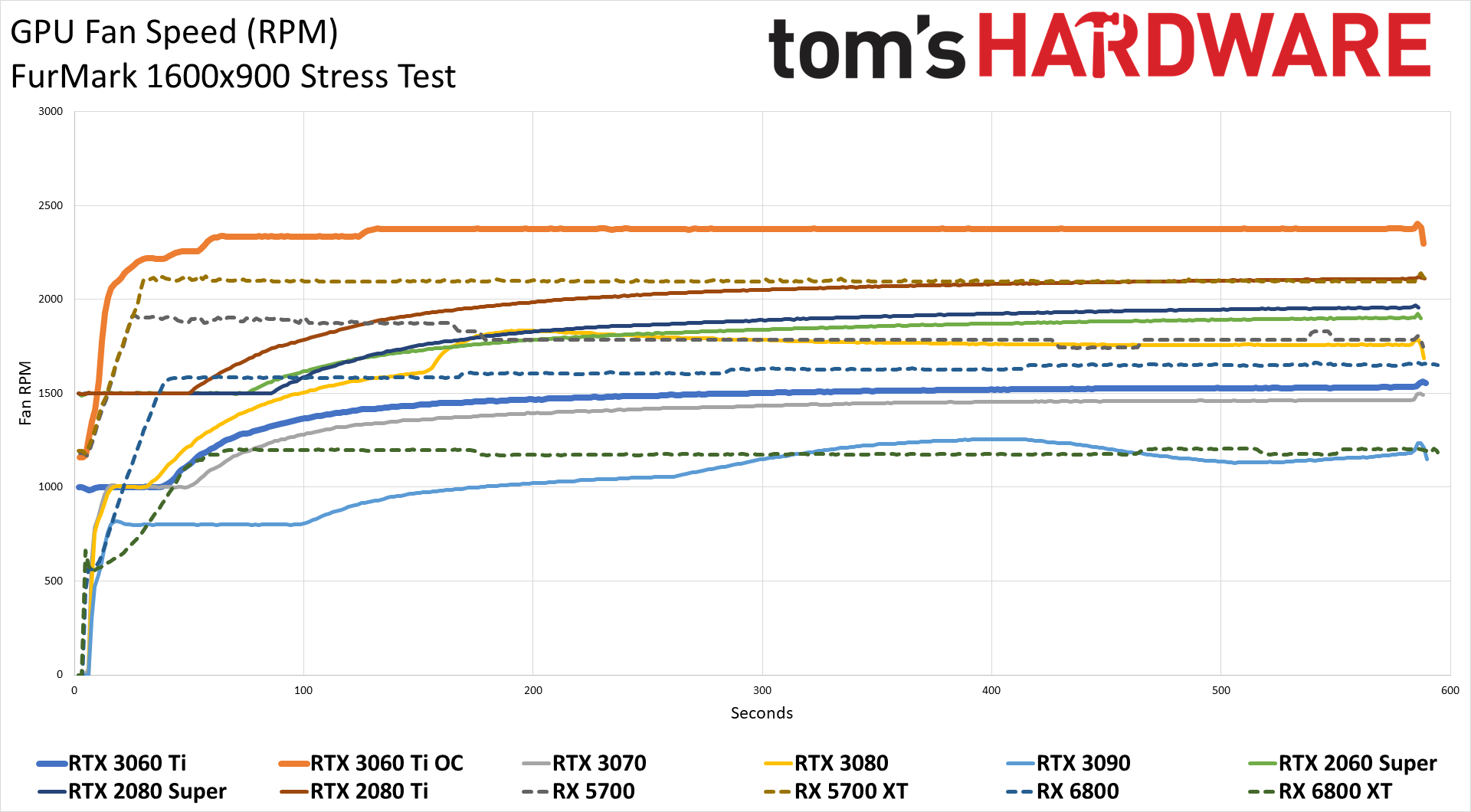
Interestingly, the 3060 Ti's fan speeds are slightly higher than the 3070. That could just be variance on the cards and fans, or perhaps more likely, the GA104 silicon in the 3060 Ti was binned and determined to be a better fit for a lower-tier card, with the higher-quality silicon going into the 3070 cards. At stock, the 3060 Ti fans ran at around 1380 RPM in Metro and 1440 RPM in FurMark. Our aggressive fan speed curve for overclocking bumped the RPM up to around 2350. We could certainly tune things better, but this was sufficient for our testing purposes.
Get Tom's Hardware's best news and in-depth reviews, straight to your inbox.
MORE: Best Graphics Cards
MORE: GPU Benchmarks
MORE: All Graphics Content
Current page: GeForce RTX 3060 Ti: Power, Temperatures, and Fan Speeds
Prev Page Nvidia GeForce RTX 3060 Ti — Ray Tracing and DLSS Performance Next Page Nvidia GeForce RTX 3060 Ti Founders Edition: Impressive Mainstream Appeal
Jarred Walton is a senior editor at Tom's Hardware focusing on everything GPU. He has been working as a tech journalist since 2004, writing for AnandTech, Maximum PC, and PC Gamer. From the first S3 Virge '3D decelerators' to today's GPUs, Jarred keeps up with all the latest graphics trends and is the one to ask about game performance.
-
JarredWaltonGPU FYI, the initial 3060 Ti review went up on December 1. It was a single monolithic page, for "reasons" related to our CMS and Google. We are now reposting the content in paginated form and redirecting the original article (https://www.tomshardware.com/news/nvidia-geforce-rtx-3060-ti-founders-edition-review), which means no comments get carried over unfortunately. The text and charts have not changed, on any of the reviews. It's just a change in the presentation. The comments from the first version of the article can be seen here:Reply
https://forums.tomshardware.com/threads/nvidia-geforce-rtx-3060-ti-founders-edition-review-ampere-for-only-399.3667330/ -
MihaiPop ReplyAdmin said:The RTX 3060 Ti is affordable and beats the 2080 Super in performance.
Nvidia GeForce RTX 3060 Ti Founders Edition Review: Ampere for Only $399 : Read more
Hi,
How can I buy this in europe?
It's everywhere out of stock. -
Matt_ogu812 ReplyAndrei2k said:Affordable and relative performance is irrelevant if its unavailable.
Exactly my thoughts just like many other of the 3k series of Nvidia GPU's. -
SyDiko ReplyAndrei2k said:its unavailable.
You can buy it from eBay for the hefty price of 1 kidney, so in the authors eyes its available. -
Soaptrail ReplyJarredWaltonGPU said:FYI, the initial 3060 Ti review went up on December 1. It was a single monolithic page, for "reasons" related to our CMS and Google. We are now reposting the content in paginated form and redirecting the original article (https://www.tomshardware.com/news/nvidia-geforce-rtx-3060-ti-founders-edition-review), which means no comments get carried over unfortunately. The text and charts have not changed, on any of the reviews. It's just a change in the presentation. The comments from the first version of the article can be seen here:
https://forums.tomshardware.com/threads/nvidia-geforce-rtx-3060-ti-founders-edition-review-ampere-for-only-399.3667330/
Thank you because i was wondering why this new review which seemed like it was not new. -
jeffredo To coin an old phrase "vaporware" for all intents and purposes. At least until supply actually allows them to be in stock in numbers enough to bring the price down despite miners.Reply -
Unolocogringo Reply
There are lots of cards available if you wish to pay scalper prices for them on ebay, etsy, stockx, gov group, craigslist etc....jeffredo said:To coin an old phrase "vaporware" for all intents and purposes. At least until supply actually allows them to be in stock in numbers enough to bring the price down despite miners.
All at 50-100% mark up from retail prices. -
WarNerve I just came across this "review" for the 3060 Ti.Reply
It says, "The 3060 Ti breaks 60 fps at 1080p native, and DLSS can further improve its performance. At 1440p, DLSS Quality mode still manages a decent 67 fps, and the 3060 Ti continues to lead AMD's options."
I don't know what their talking about. I have a 3060 Ti and at 1080p ,even on High/Ultra settings, I get 144fps on most games. The lowest I've come across so far has been around 80fps. And even without DLSS at 1440p the frames are still around 80-100fps.
Not to mention that the 3060 Ti is not an AMD card. Maybe that's not what the author meant when he said, "the 3060 Ti continues to lead AMD's options.", but that's what that wording means. It means that the 3060 Ti is AMD's best offering. I'm just nitpicking, I know. But it matters. Especially if you're writing a lot of reviews and such.
Edit: I know I'm responding to a fairly old post, but the article that lead me here was one of the top recommendations when I searched for info on Google. So I figure, even if a post is old, it's still relevant if people are still being directed to it. -
JarredWaltonGPU Reply
There are several issues with what you’re saying, mostly to do with reading comprehension. When I say the 3060 Ti “leads AMD’s options,” I obviously mean in the context of this review: the Nvidia 3060 Ti is ahead of AMD’s competing cards.WarNerve said:I just came across this "review" for the 3060 Ti.
It says, "The 3060 Ti breaks 60 fps at 1080p native, and DLSS can further improve its performance. At 1440p, DLSS Quality mode still manages a decent 67 fps, and the 3060 Ti continues to lead AMD's options."
I don't know what their talking about. I have a 3060 Ti and at 1080p ,even on High/Ultra settings, I get 144fps on most games. The lowest I've come across so far has been around 80fps. And even without DLSS at 1440p the frames are still around 80-100fps.
Not to mention that the 3060 Ti is not an AMD card. Maybe that's not what the author meant when he said, "the 3060 Ti continues to lead AMD's options.", but that's what that wording means. It means that the 3060 Ti is AMD's best offering. I'm just nitpicking, I know. But it matters. Especially if you're writing a lot of reviews and such.
Edit: I know I'm responding to a fairly old post, but the article that lead me here was one of the top recommendations when I searched for info on Google. So I figure, even if a post is old, it's still relevant if people are still being directed to it.
That also goes with the FPS metrics. If you play lighter games, you will get higher performance. The “67 fps” refers specifically to a game tested in this review. You quoted one specific sentence that refers to one specific game. That should be enough to give you context:
“Call of Duty: Black Ops Cold War uses ray tracing effects for shadows, with a higher fidelity (and more demanding) result in the previous Modern Warfare (2019) reboot. The 3060 Ti breaks 60 fps at 1080p native, and DLSS can further improve its performance. At 1440p, DLSS Quality mode still manages a decent 67 fps, and the 3060 Ti continues to lead AMD's options. The 6800 XT does squeak ahead at 4K, probably thanks to its 16GB of memory, but we doubt many people are going to want to play multiplayer Call of Duty at 30 fps.”
The data is all there for you to see. If you want to know how the games tested in late 2020 performed on a 3060 Ti, look at the charts. Other games will perform differently. You can look at the current GPU Benchmarks Hierarchy for more recent testing on newer games that didn’t exist when the 3060 Ti came out.
